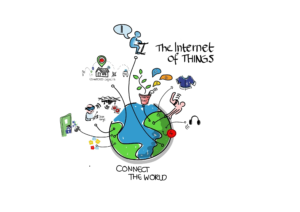Breaking Down the Impact of 5G Rollout Worldwide
The 5G rollout is reshaping the global telecommunications landscape, offering unprecedented opportunities across various sectors. This article delves into the far-reaching impact of this technological revolution, exploring both its benefits and challenges, while considering the critical role of stakeholders, including governments, corporations, and consumers. We’ll discuss the necessary infrastructure investments, regulatory hurdles, and the broader social impact of 5G’s rapid expansion. This comprehensive guide will dissect the significant developments, offering insights into the future implications for various industries, and providing actionable strategies for individuals and organizations.
Understanding the Global 5G Rollout
Defining the 5G Revolution
5G technology promises a significant leap forward in mobile network capabilities, dramatically increasing speed, reliability, and capacity compared to its predecessors. It’s a multifaceted transformation impacting not only communication but also sectors like healthcare, manufacturing, and transportation. The core tenet of this revolution is the ability to handle a dramatically increased number of devices connected to the network, enabling the development of applications that were previously impossible.
Identifying Key Stakeholders and Challenges
The global 5G rollout involves multiple players, including telecommunication companies, device manufacturers, governments, and regulatory bodies. Each group faces unique challenges in adapting to the rapid pace of technological advancement. Governments, for instance, grapple with implementing appropriate regulations and overseeing spectrum allocation. Telecommunication companies struggle with the enormous capital expenditure needed to upgrade existing infrastructure and build new networks.
The Infrastructure Imperative
Building the Foundation for 5G Connectivity
The successful rollout of 5G hinges on robust infrastructure development. This involves significant investment in building new cell towers, upgrading existing infrastructure, and expanding fiber optic networks. The construction of these networks often faces logistical and environmental challenges, especially in areas with complex terrain or environmental sensitivities. The availability of land and resources is vital for smooth implementation.
Balancing Cost and Efficiency
The significant capital expenditure required for 5G infrastructure represents a considerable hurdle for many countries. Finding the balance between cost-effective solutions and guaranteeing network reliability and speed is paramount. This is often dependent on government policies that incentivize investment and encourage collaboration between different stakeholders. Various funding strategies, including public-private partnerships, can prove crucial to overcome the financial constraints.
Related Post : The Rise of Electric Vehicles What It Means for the Future
Regulatory Landscape and Policy Decisions
Shaping the Future of 5G Connectivity
Effective regulation is essential for ensuring a fair and efficient 5G market. Countries around the world are working to create frameworks that promote innovation while preventing monopolies and ensuring network accessibility. This requires careful consideration of issues like spectrum management, licensing, and network security. Different countries have adopted varying approaches to regulation, reflecting their unique economic and social contexts.
Promoting Competition and Open Standards
Supporting a competitive and open market in the 5G sector is vital to drive innovation and lower costs for consumers. Government policies can help foster competition by encouraging the entry of new players and promoting the adoption of open standards, maximizing network interoperability.
Exploring 5G Applications
Transforming Industries with Innovative Solutions
The 5G rollout is poised to revolutionize numerous industries. In healthcare, 5G facilitates real-time remote surgery and advanced diagnostics. In manufacturing, it enables remote monitoring and control of industrial processes, leading to greater efficiency and automation. In transportation, it underpins the development of autonomous vehicles and optimized traffic management systems.
Addressing the Challenges of Deployment
While the potential of 5G is immense, significant challenges remain. Ensuring widespread adoption and widespread benefits requires addressing issues like digital literacy, access to devices and affordable plans.
The Societal Impact of 5G
Bridging the Digital Divide
The rollout of 5G networks presents opportunities to bridge the digital divide by providing access to high-speed internet for underserved communities. However, equal access to technology, affordability of devices, and digital literacy programs are crucial for maximizing the positive effects.
Shaping Future Job Opportunities
The expansion of 5G networks will likely lead to the creation of new jobs in areas such as network maintenance, data analytics, and application development. However, ensuring that the workforce is equipped to handle the new technologies is vital to prevent skill gaps.
In conclusion, the global 5G rollout is a complex undertaking with both immense potential and potential challenges. Harnessing the opportunities of this revolutionary technology requires careful consideration of infrastructure development, regulatory frameworks, and societal impact. To unlock the full potential of 5G, governments and businesses need to focus on collaboration, fostering innovation, and addressing the associated challenges. Further research and development in areas like AI integration, edge computing, and cybersecurity will be crucial to ensuring seamless deployment and sustainable use in the years ahead. For businesses, exploring the possibilities of 5G-powered solutions and actively participating in the shaping of the future of communication is highly recommended.
Share this content:














1 comment